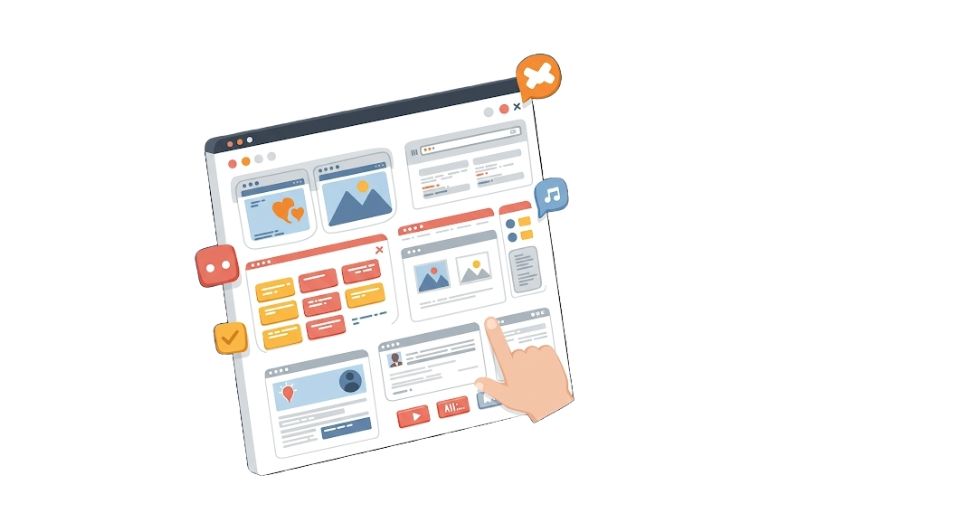
Apr 17, 2025

According to an elaborate report from Metastat Insight, the Global Website Builder Software market has indeed turned very many heads from very diverse industries. The head turns reflect the pace at which digital infrastructure is transforming and, consequently, businesses, creative minds, and institutions are finding it more compelling to use more user-friendly tools for establishing their online lives instead of full reliance on technical know-how. In the last few years, the significant transformation of this market has seen that over time it has gone through major issues because of the revolution brought up by increased digital literacy alongside e-commerce and content platforms in more matured as well as emerging economies.
Global Website Builder Software market is estimated to reach $2424.6 million in 2025 with a CAGR of 6.6% from 2025 to 2032.
It is a time when visibility has gone online to mean opportunities, and today software enabling individuals and organizations to create, manage, and personalize their websites has changed from a luxury to necessity. This growing demand has built a fertile field for developers creating simplified yet customized platforms. Many of them are currently seeking to include AI enablement, multilingualism, and mobile optimization into their service offerings as a strategy - all this to attract a more diverse clientele. Indeed, the customer in the market has placed much emphasis on customization because people want to have a unique digital experience custom-made to their identity or their business goals. Competition within the space has pushed providers to refine what is on offer continuously for higher user satisfaction and longer retention.
Metastat Insight portraiture of this market shows it is fascinating in terms of geographical trends. Places once thought of as technologically marginal are now rising to become important players because of improved penetration of the internet and more expanding entrepreneurial ecosystems. From the smallest business owners in Southeast Asia to influencers in Latin America, website-building platforms are unlocking unprecedented avenues for creativity and commerce. Expanded cloud infrastructure and reduced costs for data will only serve to accelerate this process, creating a world community of users who will rely on such tools for professional advancement, personal branding, and commerce.
The companies that are responsible for this space followed different strategies to address the varied segments of users. Some are targeting new beginners by providing sleek design templates and drag-and-drop functionality, while others are focusing on the more experienced crowd with SEO-friendly structures, advanced integrations, and e-commerce plugins. Open source platforms, meanwhile, serve developers wanting complete control but often inspiring collaboration in technical communities. This diversity has made it possible for the market to cater to all possible segmentation-from freelancers building portfolios to corporates managing multiple digital properties under one umbrella.
These moves are a reflection of social behavior and consumer expectations, which have always been instrumental in setting the footprint of any shift in the sector under observation. Users nowadays expect more than just the dynamic flows of the content to accompany static web pages with media and deliver to mobile devices easily the dubber states. As they are, so have new developments required builders to rethink or re-architect their site back-end designs to make them load fast, look good on multiple screens, and integrate with third-party users like payment gateways, CRM systems, and their marketing automation so that performance and convenience tie users into long-term loyalty on the platforms.
Interestingly, education and non-profit organizations are now some of the biggest users in proximity to this market as well. With websites that can talk about an organization's mission, provide updates, and collect donations, grass roots activities and institutions of higher learning have empowered themselves. The design template that many people rely on using automated setup guides shows that user-friendliness can attract entrepreneurs and be essential to communities operating on a very low budget.
And indeed, even traditional businesses were turned upside down by the pandemic and absorbed digital alternatives as well. Brick-and-mortar establishments that relied on patrons passing came to rely on an online platform for maintaining relevance. It was an easy and affordable way to set up a web presence compared to custom web development. While it is out of necessity at first, its long-term implications are already manifesting in the continuity and even further implementation of these platforms in day-to-day operations.
In addition to providing a snapshot of worldwide use trends, the recent report of Metastat Insight also draws attention to the speed of innovative improvements that these innovative systems are absorbing into their software. From built-in analytics dashboards to voice-activated editing to AI-generated content suggestions, these tools not only catch up with technology but also prove their worth by devising the latest advancements to improve user-friendliness. All of this, on top of elegant design and functionality, is progressively re-defining what it means to build a website-coding into the new creative purpose.
As the document from Metastat Insight indicated, Global Website Builder Software Institute depicts a fine blend of innovation, accessibility, and adaptability, all of which are current happenings in this part of the world. While they all coexist in a specific philosophy and user approach, they all constitute a holistic digital environment where creating an online presence is indeed no longer reserved for the more technologically elite. Instead, it continuously turns into something much more universal-much more of an inclusive tool for expression, growth, and connection across the globe.
Drop us an email at:
Call us on:
+1 214 613 5758
+91 73850 57479